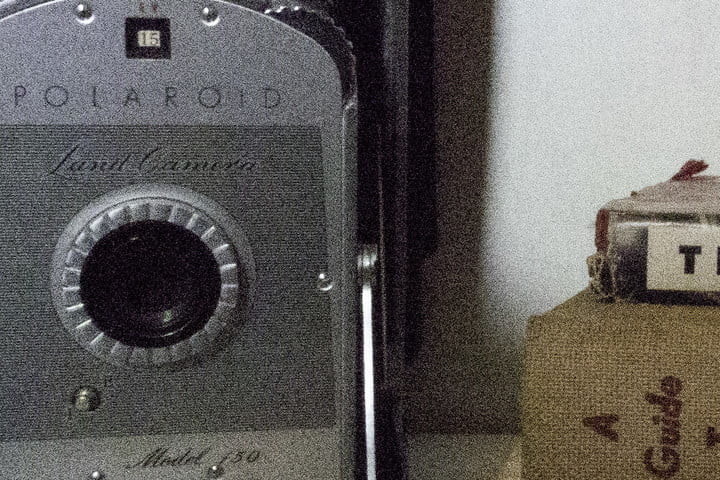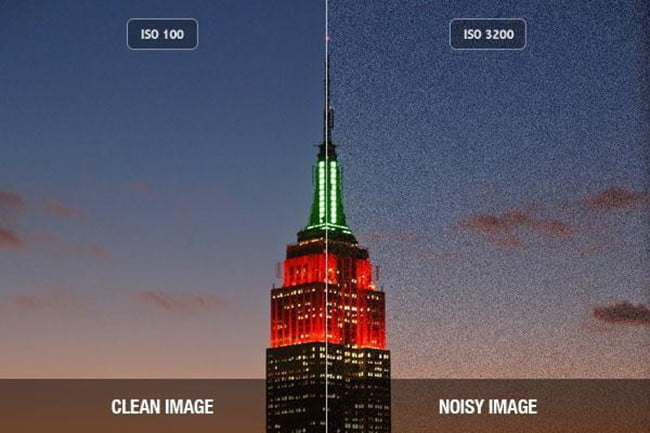Understanding terms and how they apply to your camera is key to taking excellent photographs. However, sometimes trying to understand jargon can become a somewhat daunting task. One of the most confusing configurations is ISO, one of the three exposure factors, along with shutter speed and focal aperture. Fortunately for you, we prepare this simple explanation so you can better understand what your camera's ISO is, what happens when you change it and how it affects your images.
The basics: what is ISO
The term ISO represents the acronym in English of the International Organization for Standardization, the main governing body that standardizes sensitivity levels for camera sensors, among other things. The term was transferred from the films, when the ISO classification was known as "film speed" and "ASA". Having a sensitivity standard is important, since it allows you to use the same ISO in different cameras and trust that the value will be the same in each exposure.
How ISO cameras use
With analog and digital cameras, ISO refers to the same thing: the light sensitivity of the film or the image sensor. When you change the ISO on a digital camera, you are making the sensor more or less sensitive to light. One of the most important features of digital cameras, which is often taken for granted, is its ability to change ISO on the fly. On the days of the film roll, you were basically tied to the film speed you had put in your camera, at least until you finished that particular roll.
 Photo taken with an ISO 6,400 at 1,600px
Photo taken with an ISO 6,400 at 1,600pxDigital cameras typically have ISO settings ranging between 100 (low sensitivity) and 12,800 or more (high sensitivity). However, compact cameras and camera phones may go lower than that, and some cameras with interchangeable lenses with larger sensors rise even more, reaching ISO levels in hundreds of thousands.
The exhibition
Like the shutter speed and aperture, the ISO values correspond to the “stop” of the exposure, with an increase of one stop the sensitivity is doubled. The relationship between the ISO value and exposure stops is very simple: ISO 200 is an increase of one stop (doubles the sensitivity) with respect to ISO 100. ISO 6,400 is six stops over ISO 100. If you increase the ISO from 100 to 400, you must balance it with a decrease of two to maintain the same general exposure value, for example, by changing the shutter speed from 1/125 seconds to 1/500. Obviously, the exact numbers depend on the specific illumination of the situation.
 Sample image of the Olympus OM-D E-M1X. Camera settings: 87 mm at f / 4, 1/250, ISO 200.
Sample image of the Olympus OM-D E-M1X. Camera settings: 87 mm at f / 4, 1/250, ISO 200.ISO and quality
Beyond simply changing the exposure, ISO also affects image quality. A higher ISO generally results in a noisy or grainy image, just as a higher ISO film has more grain than one with a lower ISO. However, the image below shows how ISO can directly affect image quality. However, you should consider that noise levels will also depend on the camera.

However, a lower ISO does not only cause less noise. It also produces a better color and dynamic range, which is the camera's ability to capture details both in the lights and in the shadows. Therefore, it is generally recommended to keep the ISO as low as possible to obtain the highest quality from your camera.
How to choose the ISO
However, there are times when it will not be possible to obtain an adequate exposure without increasing the ISO. The most obvious example is low light scenarios, especially indoors. Other situations in which you may need a high ISO are instances in which you need to capture action (which requires a fast shutter speed) or depth of field (which needs a small aperture). In cameras with larger sensors, the ISO can often be raised quite high before it significantly affects image quality. So if you have a digital or mirrorless SLR camera, don't be afraid to try a higher ISO if you can't get the shutter speed or the aperture value you want otherwise.
 Photo taken with an Olympus E-M1, 7-14 mm f2.8, 1/13, f2.8, 250 ISO. Jay Dickman
Photo taken with an Olympus E-M1, 7-14 mm f2.8, 1/13, f2.8, 250 ISO. Jay DickmanHere are some common situations that affect the way you choose an ISO:
- If the subject is moving and do you want to freeze the movement in a still image, a Highest ISO allow faster shutter speed.
- If you are using a trpode To stabilize your camera, you can usually use a slower shutter speed, which in turn allows you to use a lower ISO. You should consider that a trpode does not help you to freeze the movement of the subject.
- If you are taking one image that does not require a great depth of field, you can increase the aperture (so that more light enters the lens) and use a Lower ISO. Different lenses have different maximum aperture values, which means that not everyone lets in the same amount of light.
- If you are photographing with artificial light (for example, a flash), you can usually use a lower ISO settings.
- If you want to show only one small version of the photograph, like on Instagram, you can use a Highest ISO.
- The noise characteristics of a high ISO setting can you give it a vintage look to your photographs, although this is an effect that is often better left for further processing.
Noise reduction
You should also consider that a high ISO image can look fantastic on your camera's LCD screen, but that does not necessarily mean that it has noise when you print it or see it on a computer screen. By default, cameras also tend to apply noise reduction in JPEG images with high ISO. This mechanism eliminates noise by applying a small amount of blur to the image, at the expense of details. Therefore, if you want to take shots with a high ISO, you may need to find and adjust your camera's noise reduction settings. Restrict this function or even disable it to help you preserve the details of your images. However, for images that will only end up on social networks, noise reduction is adequate at its default value.
In addition, most photo editing software includes noise reduction settings. As in reducing camera noise, they will blur the image slightly, sometimes selectively, to reduce visible noise, but again at the expense of detail. The application of noise reduction in postproduction tends to produce better results than when you do it directly in the camera.
Simply put, a high ISO allows you to shoot at faster shutter speeds, smaller apertures or in darker conditions. However, this causes an increase in noise and a general loss of detail.
Editor Recommendations
